
Koper: The Adriatic Gem of Slovenia
Discover Koper, Slovenia's oldest town, where Venetian history meets Mediterranean charm. Enjoy rich culture, stunning architecture, and beautiful beaches in this Adriatic gem.
Nestled on the Adriatic coast, Koper is Slovenia's oldest town, offering a blend of rich history and Mediterranean charm. As you walk through its maze of narrow streets, you will be transported back in time, surrounded by Venetian architecture and ancient landmarks that tell tales of a bygone era. The Praetorian Palace, with its magnificent Gothic and Renaissance elements, stands as a testament to the city's storied past. Koper is not just a historical treasure trove but also a vibrant port city. The bustling marina is a perfect spot to watch sailboats glide by while enjoying a refreshing gelato. The city's market buzzes with life, showcasing local produce, crafts, and delicacies that will tantalize your taste buds. Don't miss the chance to sample Koper's renowned olive oil and wines, products of the fertile Istrian soil. Nature lovers will find solace in the nearby Škocjanski zatok Nature Reserve, a haven for birdwatchers and hikers. The city’s beaches, with crystal-clear waters, are ideal for a relaxing day under the sun. Koper's strategic location also makes it a great base for exploring the Slovenian coast and the Karst region, known for its stunning caves and unique landscapes.
Local tips in Koper
- Visit the Praetorian Palace early in the morning to avoid crowds and enjoy the best photo opportunities.
- Sample local delicacies at the city market, especially the olive oil and Istrian wines, for an authentic taste of Koper.
- Bring comfortable walking shoes as Koper's old town is best explored on foot with its narrow, cobbled streets.
- Check out the cultural events calendar before your visit; Koper hosts various festivals and events that highlight local traditions and arts.
- Take a day trip to the nearby Škocjanski zatok Nature Reserve for birdwatching and a peaceful escape from the city.
Koper: The Adriatic Gem of Slovenia
Nestled on the Adriatic coast, Koper is Slovenia's oldest town, offering a blend of rich history and Mediterranean charm. As you walk through its maze of narrow streets, you will be transported back in time, surrounded by Venetian architecture and ancient landmarks that tell tales of a bygone era. The Praetorian Palace, with its magnificent Gothic and Renaissance elements, stands as a testament to the city's storied past. Koper is not just a historical treasure trove but also a vibrant port city. The bustling marina is a perfect spot to watch sailboats glide by while enjoying a refreshing gelato. The city's market buzzes with life, showcasing local produce, crafts, and delicacies that will tantalize your taste buds. Don't miss the chance to sample Koper's renowned olive oil and wines, products of the fertile Istrian soil. Nature lovers will find solace in the nearby Škocjanski zatok Nature Reserve, a haven for birdwatchers and hikers. The city’s beaches, with crystal-clear waters, are ideal for a relaxing day under the sun. Koper's strategic location also makes it a great base for exploring the Slovenian coast and the Karst region, known for its stunning caves and unique landscapes.
When is the best time to go to Koper?
Iconic landmarks you can’t miss
Da Ponte Fountain
Explore Koper's Da Ponte Fountain, where history, art, and local culture converge in a picturesque square that enchants every visitor.

Vrata Muda
Explore the historical charm of Vrata Muda in Koper, where ancient architecture meets vibrant culture, making it a must-see for every traveler.
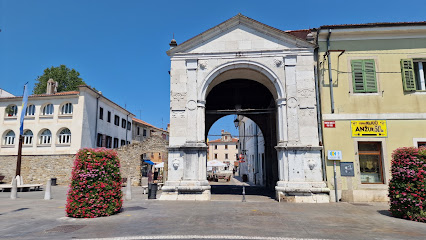
Stolnica Marijinega vnebovzetja
Explore the stunning Stolnica Marijinega vnebovzetja in Koper, a magnificent cathedral that embodies history, culture, and stunning architectural beauty.

Centralni mestni park
Discover the beauty of Centralni mestni park, a serene oasis in the heart of Koper, perfect for relaxation, picnics, and cultural events.

Praetorian Palace
Explore the enchanting Praetorian Palace in Koper, a stunning Gothic masterpiece that reflects the city's rich history and architectural beauty.
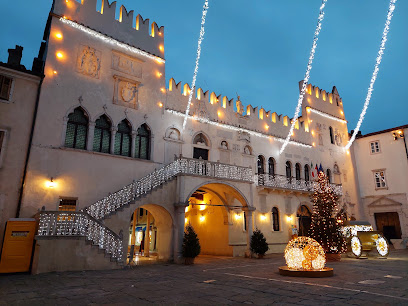
Koper Regional Museum
Explore the Koper Regional Museum, where history meets culture in the heart of Slovenia's coastal gem.

Koprska promenada
Explore the beauty of Koprska Promenada, a scenic seaside promenade in Koper, Slovenia, perfect for leisurely strolls and local cuisine.

Loža (Loggia)
Explore the historical elegance of Loža (Loggia) in Koper, a stunning landmark embodying the rich cultural heritage of Slovenia.

Gravisijev grad
Discover the captivating beauty and rich history of Gravisijev Grad, a stunning castle in Koper, Slovenia, perfect for every traveler.

Turistično informacijski center Koper
Explore Koper's rich history and vibrant culture at the Tourist Information Center, your gateway to unforgettable experiences along the Slovenian coast.

Bell Tower
Discover Koper's Bell Tower, where history meets stunning views in the heart of Slovenia's charming coastal city.

Carpaccio House
Explore Carpaccio House in Koper: A historical gem celebrating the artistry of Vittore Carpaccio amidst Slovenia's rich cultural tapestry.

Carpacciov trg
Discover the historical allure of Carpacciov trg, Koper's charming square filled with rich culture, stunning architecture, and vibrant local life.

Palača Belgramoni-Tacco / Palazzo Belgramoni-Tacco
Explore the rich history and exquisite architecture of Palazzo Belgramoni-Tacco, a cultural gem in Koper, Slovenia.

Fontico
Discover the captivating history of Koper at Fontico, a stunning historical landmark showcasing the city’s rich maritime heritage.

Unmissable attractions to see
Unity of Italy Square
Explore Unity of Italy Square, a stunning historical landmark in Trieste, blending breathtaking architecture with vibrant seaside views.

Postojna Cave
Experience the enchanting beauty of Postojna Cave in Slovenia, a breathtaking natural wonder filled with stunning formations and rich biodiversity.

Miramare Castle
Discover the enchanting Miramare Castle in Trieste, where history meets stunning coastal views and picturesque gardens, a true gem of Italy's heritage.

Predjama Castle
Explore the captivating beauty and rich history of Predjama Castle, Slovenia's breathtaking cliffside fortress, a true testament to medieval architecture.

Skocjan Caves
Discover the enchanting Skocjan Caves, a UNESCO World Heritage site in Slovenia, featuring stunning limestone formations and rich biodiversity.

Jama - Grotta Baredine
Experience the breathtaking underground beauty of Jama - Grotta Baredine, a captivating cave system in Nova Vas, Croatia, filled with stunning geological wonders.

Basilica di Santa Maria Assunta
Explore the Basilica di Santa Maria Assunta in Aquileia, a stunning architectural gem and a UNESCO World Heritage site showcasing exquisite mosaics and rich history.

Pinewood of Barcola
Explore the natural beauty of the Pinewood of Barcola, a serene park in Trieste offering stunning coastal views and lush greenery.

Duino Castle / Devinski Grad
Explore the enchanting Duino Castle, a historic gem overlooking the Adriatic Sea, where history meets breathtaking scenery and artistic inspiration.

Nature Park Učka
Explore the stunning beauty of Nature Park Učka, a natural paradise in Croatia filled with diverse wildlife, scenic trails, and breathtaking views.

Castello di San Giusto
Discover the grandeur of Castello di San Giusto, a historic fortress in Trieste with stunning views, rich history, and engaging museums.

Canal Grande
Explore the picturesque Canal Grande in Trieste, a vibrant hub of culture, history, and stunning architecture, perfect for a memorable visit.

Roman Theatre of Trieste
Discover the enchanting Roman Theatre of Trieste, a stunning historical landmark showcasing the grandeur of ancient performances amidst breathtaking views.

Euphrasian Basilica
Discover the mesmerizing Euphrasian Basilica in Poreč, a UNESCO World Heritage Site boasting stunning Byzantine architecture and rich history.

Revoltella Museum
Explore the Revoltella Museum in Trieste, a cultural gem showcasing modern art and a rich history in a stunning architectural setting.

Essential places to dine
Snack Bar 1964
Discover the vibrant flavors of Slovenia at Snack Bar 1964 in Koper – where fast food meets local charm.

Chang, Koper
Experience authentic Chinese cuisine at Chang in Koper - where flavor meets tradition in every dish.

Capra Restaurant and café, Koper
Experience authentic Slovenian cuisine at Capra Restaurant and Café in Koper, where every dish tells a story.

Mornarček, ribja kantina - fish house
Discover Mornarček: Koper's premier seafood restaurant offering fresh fish dishes and stunning coastal views.

Fritolin
Experience the flavors of Slovenia at Fritolin in Koper—your destination for fresh seafood and authentic local cuisine.

Emonec
Experience the best of Slovenian craft beer and delicious cuisine at Emonec Brewpub in Koper.
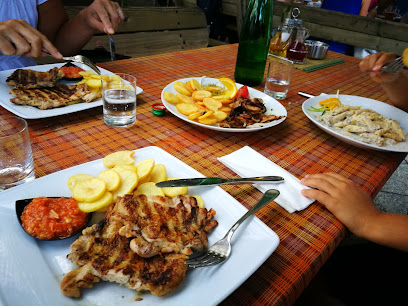
Pizzerija Atrij
Experience authentic Slovenian pizza at Pizzerija Atrij in Koper - where every slice tells a story!

Al Mulin
Discover Al Mulin in Koper – an exquisite seafood restaurant offering fresh local flavors and stunning coastal views for an unforgettable dining experience.

Baščaršija (Koper Carpacciov trg)
Experience authentic Balkan cuisine at Baščaršija in Koper's vibrant Carpacciov trg; a culinary journey awaits!

Urban Piqniq
Discover Urban Piqniq in Koper - where diner comfort meets pub vibes for an unforgettable culinary adventure.

Savor Restaurant & Wine Bar
Experience exquisite dining at Savor Restaurant & Wine Bar in Koper - where local flavors meet elegance by the waterfront.

Kamarin Bar&Grill
Experience exquisite grilled dishes and fast food delights at Kamarin Bar&Grill in the heart of Koper.

Gostilna Pri Tinetu
Discover authentic Slovenian flavors at Gostilna Pri Tinetu in Koper - a culinary gem offering delightful local dishes in a cozy setting.

Lars&Sven Koper
Discover the best gourmet hamburgers at Lars&Sven Koper - where taste meets quality in every bite.

Fast food 'Magic'
Discover Fast Food Magic in Koper: Enjoy delicious fast food favorites with local flavors at this vibrant eatery open daily from 8 AM to 11 PM.

Markets, malls and hidden boutiques
Park Center Koper
Experience the best shopping, dining, and entertainment at Park Center Koper, the ultimate shopping destination in Slovenia.

Planet Koper
Explore Planet Koper: Slovenia's vibrant shopping mall offering diverse stores, dining, and entertainment for an unforgettable experience.

Supernova Koper
Discover the ultimate shopping experience at Supernova Koper, where fashion, food, and fun converge in Slovenia's vibrant coastal city.

Supernova Mercator Koper
Experience the vibrant shopping and dining scene at Supernova Mercator Koper, a must-visit destination in Slovenia's coastal city of Koper.

OVS
Shop the latest trends at OVS in Koper, where style meets affordability for the perfect fashion experience.
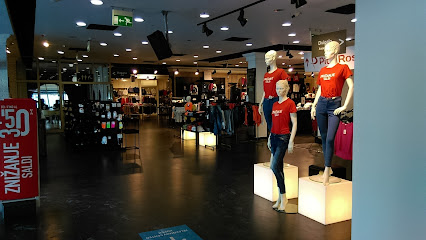
DOK7 Skate Shop
Discover Koper's DOK7 Skate Shop - your ultimate destination for quality skateboards, gear, and a passionate skate community.

HIŠA DARIL - Koper
Discover unique gifts and souvenirs at HIŠA DARIL in Koper, Slovenia - a delightful shop filled with treasures for every occasion.
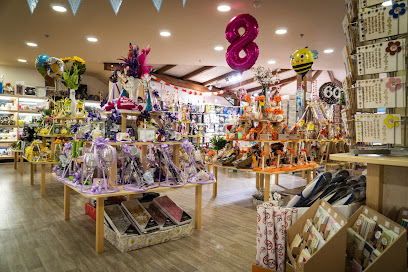
KAOS trgovina
Discover unique fashion at KAOS Trgovina in Koper, Slovenia - your destination for stylish apparel and accessories.

Antikvariat Cunjak
Explore a treasure trove of antiques and collectibles at Antikvariat Cunjak, a charming antique store in the heart of Koper, Slovenia.

Trgovina Koper
Discover beauty and elegance at Trgovina Koper, a top cosmetics and costume jewelry store in the heart of Slovenia's coastal gem.

ParkCity Trgovina z urami in nakitom,spletna trgovina,popravilo ur,menjava baterij,trgovina Koper
Explore ParkCity in Koper for exquisite watches and jewelry, expert repairs, and a shopping experience that combines quality and elegance.
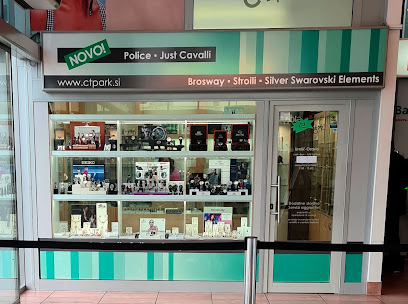
Natural Mystic Shop, specializirana trgovina na drobno, Tedeja Vinkovič s.p.
Explore the Natural Mystic Shop in Koper - Your destination for holistic products, crystals, and unique gifts that connect you to nature.

Etnika
Explore Etnika, a treasure trove of authentic African goods in Koper, Slovenia, where culture and craftsmanship meet.

Stradivarius
Explore the latest women's fashion trends at Stradivarius in Koper, where style meets affordability in a chic shopping experience.

Konfeterija Danev
Discover the sweet side of Koper at Konfeterija Danev, where handcrafted confections and delightful pastries await every visitor.

Essential bars & hidden hideouts
Snack Bar 1964
Discover the vibrant flavors of Koper at Snack Bar 1964, a perfect blend of local and international cuisine in a lively atmosphere.

Emonec
Discover the essence of Koper at Emonec, where craft beer meets delicious cuisine in a cozy brewpub atmosphere.

GRILL & BAR SERMINČEK, Sonja Kmetič, SpA
Experience the best of local cuisine and vibrant atmosphere at GRILL & BAR SERMINČEK, a must-visit bar in Koper for every traveler.

Kamarin Bar&Grill
Discover the vibrant flavors of Koper at Kamarin Bar&Grill, where delicious grilled dishes and fast food come together in a lively atmosphere.

Lord Byron Pub.
Discover the vibrant atmosphere and delightful drinks at Lord Byron Pub, a local gem in Koper, Slovenia, perfect for relaxation and socializing.

Calypso bar
Experience the vibrant atmosphere of Calypso Bar in Koper, Slovenia, where stunning sea views meet an extensive drink menu.

Barba bar & more
Experience the essence of Koper's nightlife at Barba Bar & More, where great drinks and a vibrant atmosphere await every visitor.

Rifugio Food/Drink And More
Discover the lively atmosphere at Rifugio Food/Drink And More in Koper, where great food, drinks, and entertainment meet.
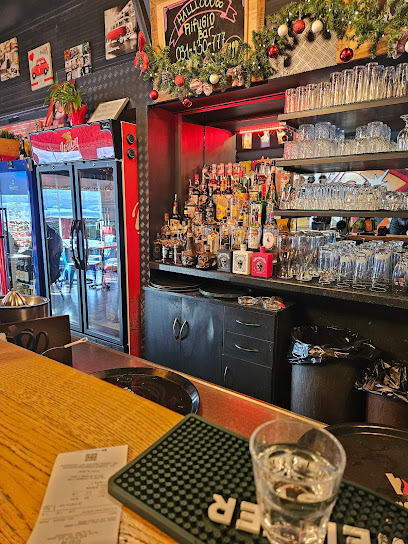
Bellavita
Experience the vibrant atmosphere and exquisite drinks at Bellavita, the perfect bar for relaxation in Koper, Slovenia.

Figa Rock bar
Experience the vibrant nightlife at Figa Rock Bar in Koper, where lively music, delicious drinks, and friendly faces await every visitor.

Bar Cameral
Discover the vibrant charm of Bar Cameral in Koper, where local culture meets delightful drinks in a cozy setting.

Insieme Bar
Experience the vibrant atmosphere of Insieme Bar in Koper, Slovenia, where refreshing drinks meet a charming beer garden ambiance.
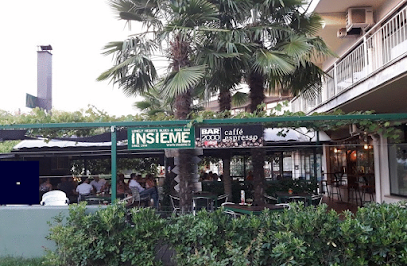
Ghetto Something
Discover Ghetto Something, Koper's lively pub offering a warm atmosphere, great drinks, and a taste of local nightlife.

Bar Miramar
Discover the charm of Koper at Bar Miramar, where local wines and delectable snacks await in a picturesque square.
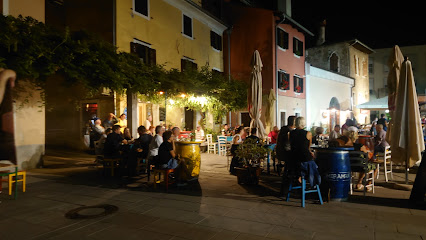
Pub 33
Experience the vibrant nightlife at Pub 33 in Koper, where great drinks, live music, and a friendly atmosphere await every visitor.

Travel experiences inspired by this city
Explore more travel diariesLocal Phrases
-
- HelloZdravo
[Zdrah-voh] - GoodbyeNasvidenje
[Nahs-vee-deh-nyeh] - YesDa
[Dah] - NoNe
[Neh] - Please/You're welcomeProsim
[Proh-seem] - Thank youHvala
[Hvah-lah] - Excuse me/SorryOprosti
[Oh-prohs-tee] - How are you?Kako si?
[Kah-koh see] - Fine. And you?V redu. In ti?
[V reh-doo. Een tee] - Do you speak English?Govorite angleško?
[Goh-voh-ree-teh ahn-gleh-shkoh] - I don't understandNe razumem
[Neh rah-zoo-mehm]
- HelloZdravo
-
- I'd like to see the menu, pleaseRad bi videl jedilnik, prosim
[Raad bee vee-del yeh-deel-neek, proh-seem] - I don't eat meatNe jem mesa
[Neh yem meh-sah] - Cheers!Na zdravje!
[Nah zdrahv-yeh] - I would like to pay, pleaseRad bi plačal, prosim
[Raad bee plah-chahl, proh-seem]
- I'd like to see the menu, pleaseRad bi videl jedilnik, prosim
-
- Help!Pomoč!
[Poh-mohch] - Go away!Pojdi stran!
[Poy-dee strahn] - Call the Police!Pokliči policijo!
[Poh-klee-chee poh-lee-tsee-yoh] - Call a doctor!Pokliči zdravnika!
[Poh-klee-chee zdrahv-nee-kah] - I'm lostIzgubil sem se
[Eez-goo-beel sehm seh] - I'm illBoln sem
[Boh-ln sehm]
- Help!Pomoč!
-
- I'd like to buy...Rad bi kupil...
[Raad bee koo-peel] - I'm just lookingSamo gledam
[Sah-moh gleh-dahm] - How much is it?Koliko stane?
[Koh-lee-koh stah-neh] - That's too expensiveTo je predrago
[Toh yeh preh-drah-goh] - Can you lower the price?Lahko znižate ceno?
[Lah-koh znee-zah-teh cheh-no]
- I'd like to buy...Rad bi kupil...
-
- What time is it?Koliko je ura?
[Koh-lee-koh yeh oo-rah] - It's one o'clockJe ena ura
[Yeh eh-nah oo-rah] - Half past (10)Pol desetih
[Pohl deh-seh-teeh] - MorningJutro
[Yoo-troh] - AfternoonPopoldne
[Poh-pohl-dneh] - EveningVečer
[Veh-chehr] - YesterdayVčeraj
[Vcheh-rye] - TodayDanes
[Dah-nes] - TomorrowJutri
[Yoo-tree] - 1Ena
[Eh-nah] - 2Dva
[Dvah] - 3Tri
[Tree] - 4Štiri
[Shtee-ree] - 5Pet
[Peh-t] - 6Šest
[Shehst] - 7Sedem
[Seh-dehm] - 8Osem
[Oh-sehm] - 9Devet
[Deh-veht] - 10Deset
[Deh-seht]
- What time is it?Koliko je ura?
-
- Where's a/the...?Kje je...
[Kye yeh] - What's the address?Kakšen je naslov?
[Kahk-shehn yeh nahs-lohv] - Can you show me (on the map)?Mi lahko pokažete (na zemljevidu)?
[Mee lah-koh poh-kah-zheh-teh (nah zehm-lyeh-vee-doo)] - When's the next (bus)?Kdaj je naslednji (avtobus)?
[Kdyeh yeh nah-slehd-nee (ow-toh-boos)] - A ticket (to ....)Ena vozovnica (za ....)
[Eh-nah voh-zov-nee-tsah (zah)]
- Where's a/the...?Kje je...
History of Koper
-
The origins of Koper can be traced back to the times of the ancient Greeks and Romans. Known as Aegida during Roman times, it was an important port and settlement. The Roman influence is still visible today in the form of archaeological remains and ancient structures scattered throughout the city.
-
From the 13th to the 18th century, Koper was under the rule of the Venetian Republic. This period significantly shaped the city's architecture and culture. The Venetian Gothic style is evident in many of the buildings, including the Praetorian Palace and the Cathedral of the Assumption. This era also saw the flourishing of trade and art, making Koper a vital maritime hub.
-
In the early 19th century, Koper fell under the control of Napoleonic France. During this time, the city was incorporated into the Illyrian Provinces, and many administrative and social reforms were implemented. This period was relatively short but left a lasting impact on the administrative structure of Koper.
-
Following the defeat of Napoleon, Koper became part of the Austrian Empire and later the Austro-Hungarian Empire. This era lasted until World War I and saw significant economic development and modernization. The city's infrastructure expanded, and new architectural styles began to emerge, blending with the existing Venetian heritage.
-
After World War I, Koper was annexed by Italy under the Treaty of Rapallo. This period was marked by efforts to Italianize the city, affecting its cultural and social fabric. World War II brought significant turmoil, with Koper experiencing occupation and resistance movements. The end of the war saw the city becoming a part of Yugoslavia.
-
Post-World War II, Koper became part of the Socialist Federal Republic of Yugoslavia. This period was characterized by industrial growth and urbanization. The port of Koper was developed into a major maritime gateway, boosting the local economy. The city's multicultural identity was shaped by the diverse ethnic groups residing in the region.
-
In 1991, Slovenia declared independence from Yugoslavia, and Koper became part of the newly-formed Republic of Slovenia. Since then, the city has experienced significant growth and modernization while preserving its rich historical heritage. Today, Koper is a vibrant coastal city, known for its unique blend of history, culture, and modern amenities.
Koper Essentials
-
Koper is located on the Adriatic coast of Slovenia. The nearest international airport is Ljubljana Jože Pučnik Airport, approximately 130 kilometers away. From the airport, you can take a shuttle bus to Ljubljana and then a train or bus to Koper. The journey takes around 2 to 3 hours. Alternatively, Trieste Airport in Italy is about 60 kilometers away, and you can take a bus or taxi from there to Koper.
-
Koper is well-connected by public transportation. The city has a reliable bus network that covers most areas. For short distances, walking or renting a bicycle is a convenient option. Taxis are also available but can be more expensive. Car rentals are available for those who wish to explore the surrounding areas at their own pace. The central train station provides connections to other Slovenian cities and neighboring countries.
-
The official currency in Slovenia is the Euro (EUR). Credit and debit cards are widely accepted in hotels, restaurants, and shops. ATMs are readily available throughout Koper, making it easy to withdraw cash. It is advisable to carry some cash for smaller establishments and markets where card payment may not be accepted.
-
Koper is generally a safe city for tourists. Standard precautions should be taken, such as keeping an eye on personal belongings in crowded places and avoiding poorly lit areas at night. There are no specific high-crime areas targeting tourists, but it's always best to stay vigilant and aware of your surroundings.
-
In case of an emergency, dial 112 for immediate assistance. This number connects you to the police, fire department, and medical services. Koper has a local police station and several medical facilities. Ensure you have travel insurance that covers medical emergencies. Pharmacies are available for over-the-counter medications and minor health issues.
-
Fashion: Do dress modestly, especially when visiting religious sites. Avoid wearing beachwear outside the beach areas. Religion: Do respect local customs and traditions. In churches, cover your shoulders and knees. Public Transport: Do be respectful and allow elderly passengers to sit. Don’t speak loudly or play music on public transport. Greetings: Do greet people with a handshake. A smile and a nod are also appreciated. Eating & Drinking: Do try local dishes and wines. Don’t leave food on your plate, as it can be considered wasteful.
-
To experience Koper like a local, visit the farmers' markets where you can buy fresh produce and local specialties. Engage with locals, as they are friendly and often willing to share insights about the city's history and culture. Don’t miss the Tito Square with its stunning architecture and the Koper Cathedral. For a unique experience, take a walk along the Koper coastline and enjoy the beautiful Adriatic Sea view.
Trending Landmark in Koper
-
Da Ponte Fountain
-
Vrata Muda
-
Stolnica Marijinega vnebovzetja
-
Centralni mestni park
-
Praetorian Palace
-
Koper Regional Museum
-
Koprska promenada
-
Loža (Loggia)
-
Gravisijev grad
-
Turistično informacijski center Koper
-
Bell Tower
-
Carpaccio House
-
Carpacciov trg
-
Palača Belgramoni-Tacco / Palazzo Belgramoni-Tacco
-
Fontico
Nearby Cities to Koper
-
Things To Do in Izola
-
Things To Do in Portorož
-
Things To Do in Trieste
-
Things To Do in Piran
-
Things To Do in Sežana
-
Things To Do in Postojna
-
Things To Do in Nova Gorica
-
Things To Do in Opatija
-
Things To Do in Rovinj
-
Things To Do in Pula
-
Things To Do in Škofja Loka
-
Things To Do in Bohinj
-
Things To Do in Ljubljana
-
Things To Do in Bled
-
Things To Do in Kamnik

















